When I stepped through the double entry doors under the small gable roof at the entrance to the Orvis Rod Factory last June, I expected to be greeted by old men with silver-gray beards, half-frame reading glasses, brass pocket watches, and full-length canvas shop aprons. Instead, I found Shawn Combs, Frank Hoard, and Don Swanson all wearing the same sort of clothes I wore, and each young enough to call me “sir.” Three men with the education and experience you would expect to find in a Silicon Valley start-up, not at a rod-building factory in a quaint New England town with marble sidewalks, colonial-style pubs, Adirondack chairs, and Georgian-style homes. It turns out these guys would be equally at ease in both settings, and as the day wore on, I learned they were as comfortable demonstrating the features of their rods with spreadsheets, scatter plots, and Gantt charts as they were rolling out tight loops over the nearby casting pond.
For decades, legions of tinkerers, inventors, and glass-half-full optimists have found solace and inspiration in Thomas Edison’s shoulder-to-the-wheel manifesto: “I have not failed. I’ve just found ten thousand ways that won’t work.” But the school of hard knocks is rife with students who never cross the stage for their diploma, so contemporary engineers like the Orvis guys have been trained to use a refine-by-measurement approach instead of trial-by-error to reduce the number of failures it takes to succeed. To demonstrate this enlightened tinkerer strategy, the guys explained how they build a rod, break it, analyze the evidence, update their design, build another rod, break it again, and repeat the process until they’ve made their newest rod stronger and more flexible than their last.
To show how well this works, they used a contraption that, from the rod’s perspective, must have looked like the apparatus King Edward III used to punish men convicted of high treason in the Kingdom of England. With the rod securely fastened at its butt, they pulled its tip in a way that drew the rod into a shape no seasoned angler should ever subject it to unless they’ve confused fishing with medieval torture, then watched as it passed the dry-erase marks on the wall signifying where each generation of its ancestors snapped under pressure. After bending the rod into the shape of a U with the tip at the unthinkable position they designed for, they pulled a little more until it snapped in two places, then smiled like the mad—but happy—scientists they were. This test, they proclaimed, was the ultimate demonstration of their rod's strength—as truthfully revealing as a bathroom scale.
Because the art and science of creating a fly rod from carbon fibers and resin are continuously evolving, rod makers are constantly thinking of ways to improve their design’s accuracy, durability, action, weight, and overall aesthetics. But the quest to build the perfect fly rod is subject to a basic tenet of economics: There are no absolute solutions, only trade-offs.

Making a rod stronger, for example, might make it heavier, change its flex, lessen its accuracy, and so on. So until the Paragon Rod Company releases its Quintessence line of rods, builders and buyers will continue to consciously or subconsciously assign different importance to each of a rod’s attributes. Although it’s a complicated checklist, rod builders could manage the trade-offs accordingly if every shopper’s preferences were the same. But different people have different tastes, so the folks who design and build the rods have to give some here, take a little there, and offer a long and diverse menu, much the way a chef pleases a restaurant full of patrons, each with distinct tastes and dietary quirks. One customer’s perfectly seasoned is another’s salt lick.
Like other high-quality rod builders, the Orvis guys are always looking for ways to make their rods stand out from the crowd, and like an insect with a dome-shaped compound eye, they’ve trained themselves to look in several directions at once. One of the directions they’re most interested in now concerns a rod’s inherent accuracy, and they aren’t shy about proclaiming their goal of building the most accurate rods on the market. When I first heard this, my left eyebrow rose the way it does when a politician says, “Let me be perfectly clear,” leaving me expecting them to further promise no new taxes and a chicken in every pot. Surely, accuracy is dictated more by the caster than the rod. Give world champion Maxine McCormick a $40 Ozark Trail outfit, put a thousand-dollar rod from any of the big brands in my hand, and she'll make me look like a penguin trying to throw darts. But Shawn and his team at Orvis say the rod plays an integral part in the accuracy equation, and they've crafted a compelling argument—along with an ingenious testing methodology—to showcase its inherent ability. Using computers, lasers, and an instrument that looks more like it belongs in a NASA laboratory than a rod builder’s workshop, they measure, refine, measure, refine, and continually improve their design as though their goal isn’t merely the world’s most accurate rod, but a self-casting one at that.
In his wonderful book, The Orvis Fly-Fishing Guide, Tom Rosenbauer provides excellent advice about casting a fly rod: “Don’t forget that the tip of the rod directs the line.” He says this to remind us that the line will go where we point the tip. But what if the tip deviates from where we point it? What if it wobbles to the left and right after we stop the rod’s forward motion but before the line finishes its flight? This side-to-side wobble is precisely what the space-aged contraption in the Orvis lab measures, and they’ve used those measurements to improve their designs to the point that they believe they can keep the rod’s wobble down to the size of its tip-top ring, something no other manufacturer’s rod they’ve subjected to this test comes close to accomplishing.
Time—along with thousands of casts by the Maxine McCormick’s of the world—will determine if the Orvis guys have discovered how to use a laser to build a rod that casts like one. Being an engineer myself, though, I think they might have. Not only because they work in a laboratory with the sterile look of the high-tech cleanrooms where scientists and engineers manufacture pharmaceuticals, cosmetics, and integrated circuits, but also because a colorful billboard-sized trout mural by Derek DeYoung covers one of the laboratory walls, reminding me that the Orvis guys are well-versed in the teachings of both Isaac Newton and Izaak Walton.




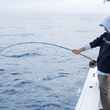

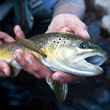
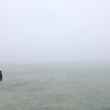




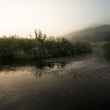



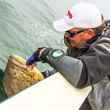
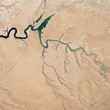



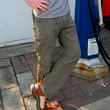
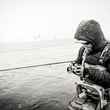



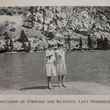

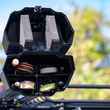
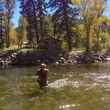
Comments
Jay replied on Permalink
Attempting to make the world's most accurate fly rod is a fools errand. There are many very good and accurate fly rods available and there have been for a long time. Accurate casting is 100% determined by the person casting it. Learn how to cast well and you can be extremely accurate with most rods. Spend your money on lessons, not expensive gear. Knowledge lasts a lifetime.
Glenn Dotter replied on Permalink
Jay, you are.100% correct. Accuracy comes from the caster or the.shooter! These companies are trying justify the cost of their rods to people who have more money than brains. I have built a number of old IM6 graphite rods and I can put my flies exactly where I want them. Ive been casting flyrods for 64 years. Its marketing to convince you tat you need to buy more. They could build a rod for $5000, and somebody would say, we can make it better.
Chris Dolnack replied on Permalink
Brilliantly written Tim. I read this article several times just so I could soak it all in. BTW, I fished my new Orvis Helios 9’ 8wt. for the first time today on Cape Cod and it is a very impressive rod.
Tim Schulz replied on Permalink
Thanks, Chris! I'm pleased that you enjoyed the story, and I'm happy you are enjoying your Helios.
Mark O'Harrow replied on Permalink
I agree 100% with the comments as stated by Tim Shultz... 80% is the ability of the fly person's skill and 20% is the rod/reel/line setup...
Pages